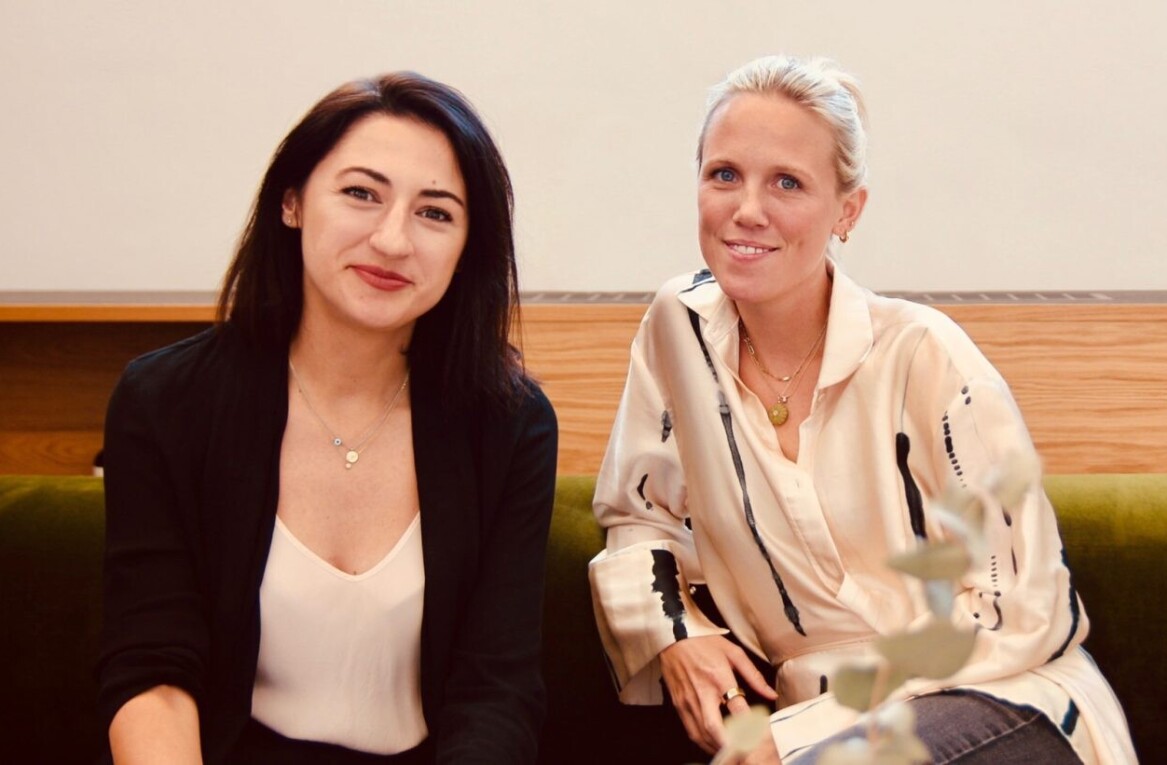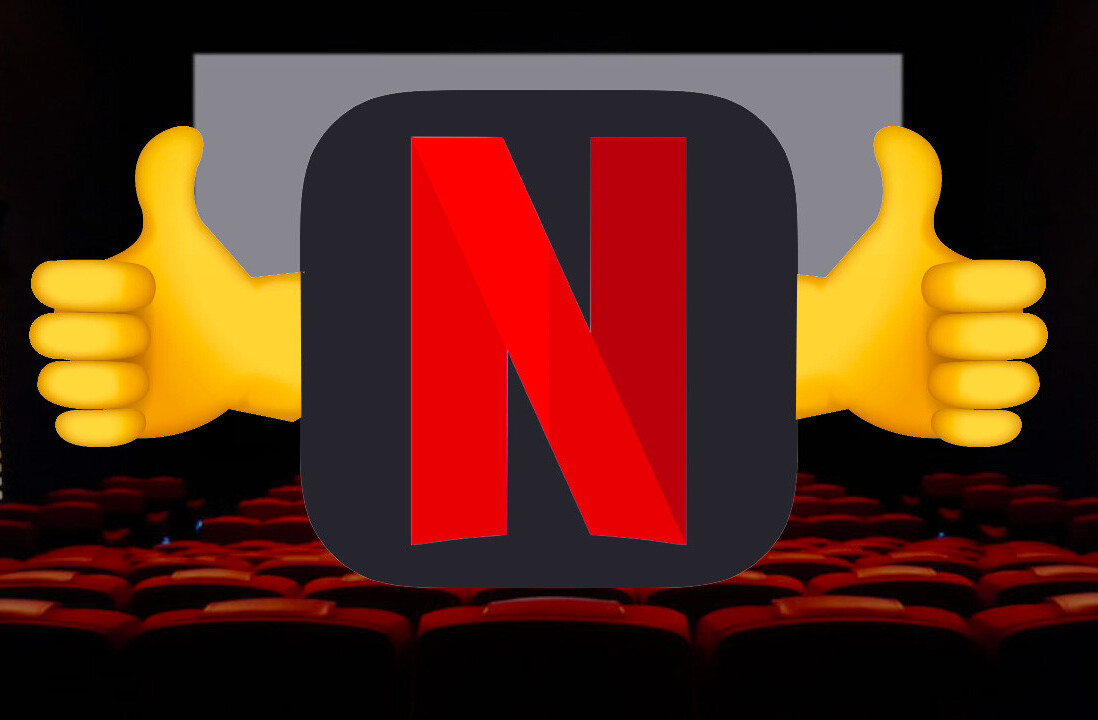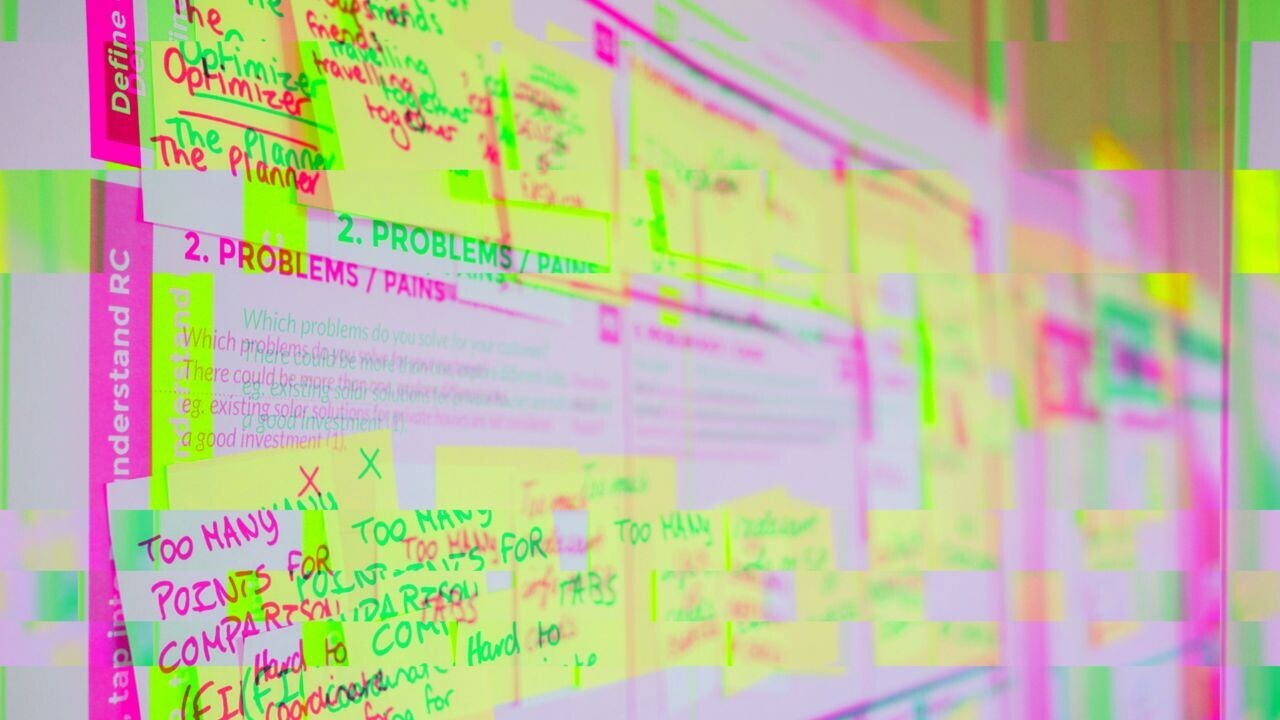
This article was originally published on .cult by Yasas Sri Wickramasinge. .cult is a Berlin-based community platform for developers. We write about all things career-related, make original documentaries, and share heaps of other untold developer stories from around the world.
All the successful product engineering teams have one common practice: a winning product development strategy. But, it is not realistic to find a universal product development strategy for different product teams.
This article presents seven different yet successful product development strategies so you can create your own plan or improve the existing strategies inspired by these practices.
1. Purpose-driven independent squads: Spotify strategy
The world popular music streaming platform, Spotify, has a speciality in their organizational hierarchy. Instead of having a conventional management structure, Spotify maintains different groups called Squads, Tribes, Alliances, and Guilds. This is entirely new labelling of group structures is inspired by the “Growth Mindset.”
Together with this different organizational structure, they’ve developed the “Spotify Model,” their own version of product development.
This model gives each product team (“Squad”) freedom to pick their preferred project management frameworks such as Agile Scrum, Kanban, or others.
“Discover the Spotify model” at Atlassian

Each team in the same organization performs in their way. However, the Spotify model encourages Squads to work together on high-level objectives. When multiple Squads are together to address high-level goals, that composite group structure is called a “Tribe”.
The next category is the “Chapter”, which is an independent entiry with extremely advanced specialization in specific areas such as Quality Assurance, User Experience, Application Security, etc. Usually, chapters include senior leads or architects, and they help each Squad level up their product.
In addition to these fundamental roles, there are more classifications in the Spotify Model, and you can explore more from here.
If you are a tech lead looking forward to inspiring your team to fasten the development process while keeping inter-team collaborations simple, the Spotify Model is worth a look.
2. Work backwards: the Amazon strategy
This is a pretty interesting tactic mastered by Amazon. The main idea is to reverse engineer the product, starting from the customer’s point of view.
Amazon’s Working Backward Model

Interestingly, they propose to start directly with a press release, announcing the product to the market. Initially, it sounds strange, but the main goal is to evaluate the market opportunity straightway. If the product is not a good fit, this strategy is the fastest way to know about it.
If the product idea seems a market hit, then the remaining steps in this strategy are executed in a manner that the process comes outside to internal working teams.
This more customer-oriented strategy is ideal if you focus on developing an entirely new product.
3. Product playbooks: Typeform’s strategy
The term “Playbook” is common in American Football, which refers to a book that holds team strategies, tactics and plays.
The Playbook holds hundreds of ways of previous experiences of team, what went well and worked out for them.
Like the Playbook concept in sports, Typeform adapted this to their product development strategy and improved their processes to the next level.
Artwork by Henrik Kniberg of Spotify
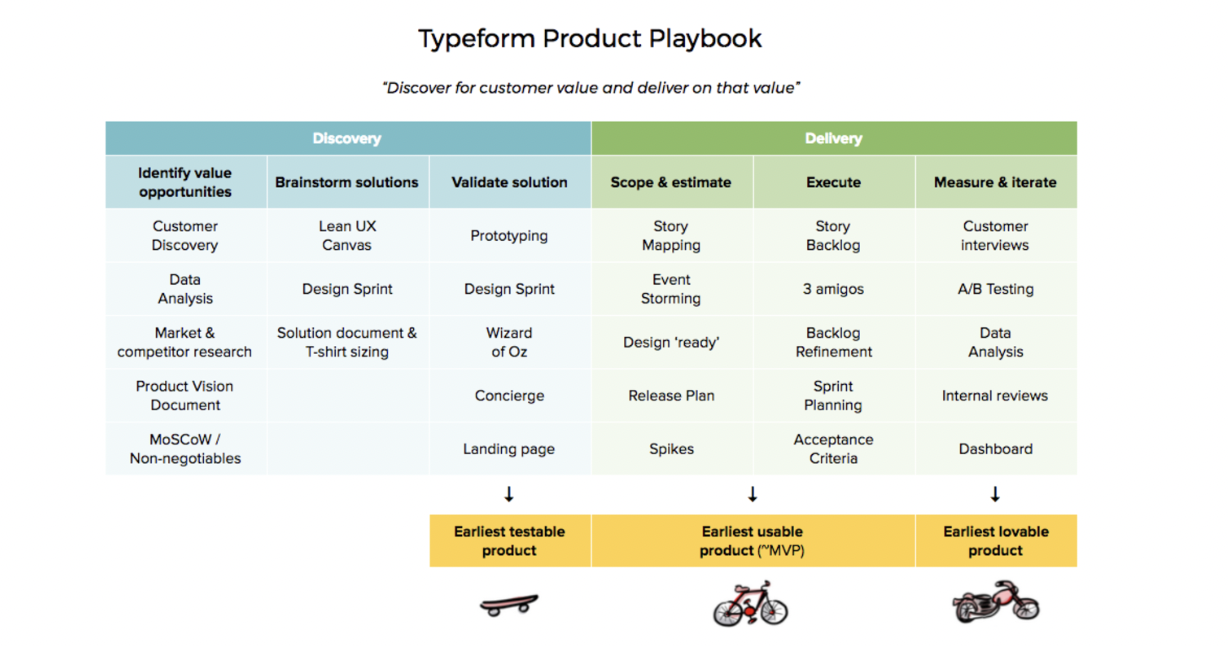
According to the Playbook concept, the main focus is to deliver testable, usable and lovable products as fast as possible.
The Playbook Strategy has 2 separate main paths as Discovery and Delivery to achieve that.
- Discovery — Brainstorming a precious product idea that can create a high-value proposition solving an existing problem in the market.
- Delivery — After discovering the product, delivery contains actionable steps to scope the project, execution process and measuring the delivery artefacts.
However, it is worth mentioning that this strategy is not linear but more toward an iterative process, which allows everyone to go back and forth and continuously improve the product.
Suppose you plan to develop a product development strategy that helps the organization in the long run. In that case, it is worth digging deep into this strategy and grabbing what works for you.
4. Maximize customer adaption and retention: Netflix’s strategy
As a movie streaming service, Netflix has the ultimate goal of attracting more subscribers to their platform and retaining them as long as they can. Their product development strategy is tailor-made to achieve this ultimate goal under 4 main subcategories.
- Personalization
- Original Content
- Watching Experience
- Interactive Storytelling
These focus areas help them build a unique product with a highly accepted market brand, which keeps them ahead of the competition. All the development work is identified under the above 4 categories and performed quarterly. Hence, every product update release addresses all of those aims, providing a better customer experience at the end of the day.
This strategy inspires companies that are looking forward to maximizing customer engagement.
5. Product and service diversification: product development strategy of Google
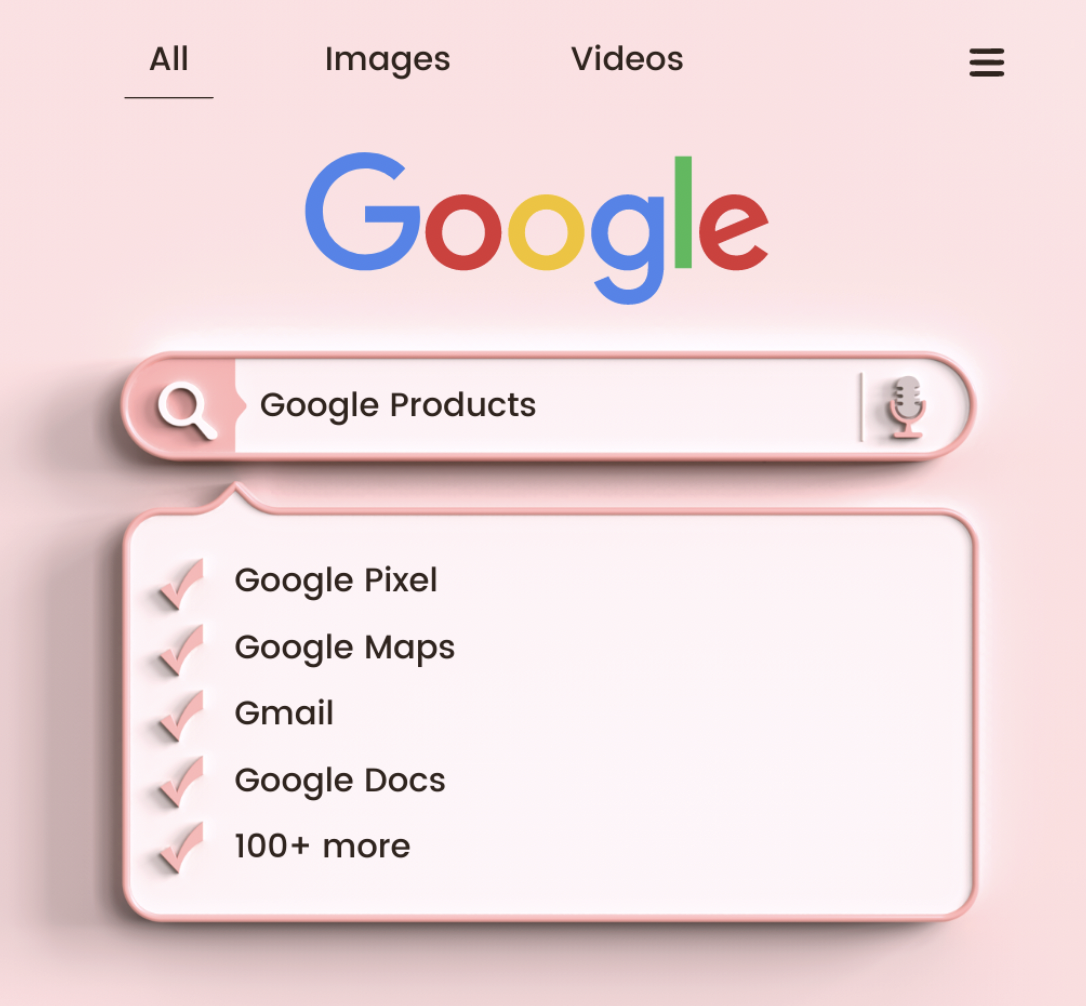
From productivity tools, entertainment services to hardware devices like Pixel phones are produced by this tech giant, Google. Therefore, it is interesting to sneak a peak at their product development strategy.
Google’s main objective is to create an eco-system that captures users, retains them, and consumes more Google Products.
Due to their continuously improving eco-system, the company is generating more and more profits and unbreakable brand awareness and attractive new internet users.
When growing the product portfolio of Google, the below 2 sub-strategies they follow are noticeable.
- Company and Product Acquisition — As a tech industry leader, Google sometimes acquires rising talent as a product or company acquisition. Then they further develop that newly acquired product under their branding.
- Vertical Integration across various Industries — Google is not limited to information technology or internet services. Still, also they work together with other industries such as computer hardware manufacturing, marketing and entertainment. They sell their services to different sectors through specialisations and generate more revenues.
Google’s product development strategy might not directly relate to small or medium-scale software companies. Still, the way they execute their product expansions inspires growing product teams to follow.
6. Concept testing: Booking.com Strategy
The main objective of this strategy is “Fail Fast, Learn Faster”, which is pioneered by booking.com. They engineer multiple prototype versions/conceptual products, deploy to the public, and gather data to understand customer preferences and engagement with their products.
When there are slightly different versions of the same concept, this strategy (also known as AB Testing) is handy to experiment and pick the best one.
The concept testing approach especially helps when you have an initial product in place, but still you have multiple concepts to improve the existing product or more state-of-the-art features which you are not very sure about the usability aspects.
7. Product mindset: the winning product strategy
The winning product strategy is another product specialization strategy tailor-made to the software industry. The core of this model is the “Product Mindset”.

This strategy is an all-rounder in the software product development lifecycle covering the ideation to product retirement phases, focusing on being ahead of the competition.
There is a community behind the Winning Product Model. They have unveiled a Winning Product Toolkit that provides a canvas and strategy tools.
Suppose you are looking for a more sustainable, low-risk software product development strategy to try out. In that case, the Winning Product Strategy is worth a look.
Your tool kit to build a winning software product
Final thoughts
Product development strategies are unique and not clearly exposed to the outer world. Still, it is worth studying the available information related to some popular organizations.
However, I believe I could present some insights about some successful strategies to you from this article. I wish you all the best with implementing your own version of a product development strategy taking your product to the next level!
“Great Products Don’t Happen By Accident”
Get the TNW newsletter
Get the most important tech news in your inbox each week.


